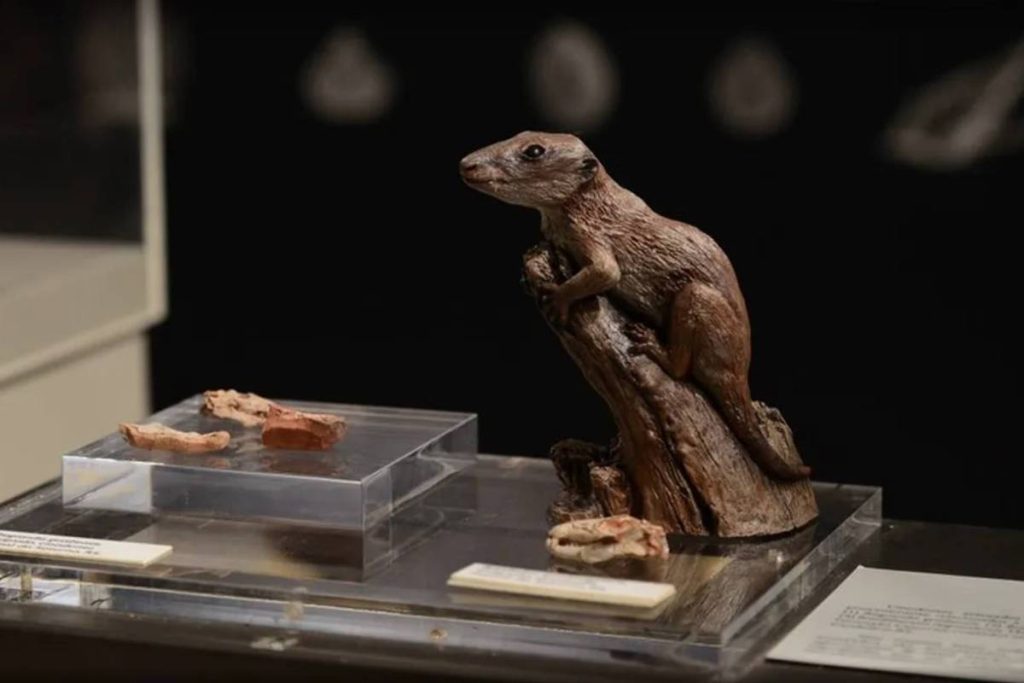A small animal about 20 cm long, similar to a mouse, with a skull smaller than 4 cm and teeth measuring about 2 mm, running around the central region of the Rio Grande do Sulis now considered mammal The oldest on the planet.
The discovery was made by researchers from the Federal University of Rio Grande do Sul UFRGS, based on microscopic analysis of the jaws and teeth of fossils found at Faxinal do Soturno, about 50 km from Santa Maria (RS).
The city is one of the 22 municipalities in the state of Rio Grande do Sul located in the area where it is called Santa Maria formationa geological unit known worldwide for more than a century for the existence of vertebrate fossils.
In the case of the fossil ‘rats’, these animals are believed to have been scientifically named prazilodone quadrangularwhich lived between 225 and 220 million years ago, at the end of Triassic period (which lasted from 250 to 200 million years).
Held with two English researchers from King’s College and London Museum of Natural HistoryThe research was published last Tuesday (6) in the English Journal of Anatomy.
In fact, the fossils were found in 2003, when prazilodone It has been described in the international literature. However, at the time, it was not considered a mammal.
But how do you know if a fossil is from a baby animal or not?
prazilodone It was not considered a mammal because the standard that paleontologists used to make this determination did not take into account whether the animal was feeding on milk or not – even because it could never have been proven in a fossil – but the presence of the three little bones that transmit sound to our ear (hammer, anvil and stirrup), which have not yet been distinguished in the gaucho fossils.
Dentist Sergio Cabrera, born in Faxinal do Soturno, in 2004 decided to study this animal’s teeth for his doctoral project, in the Earth Sciences graduate program at UFRGS.
Cabreira analyzed a set of three jaws from samples prazilodone of different sizes, therefore, at different stages of development, to determine how the development of the teeth of that animal occurred.
The pictures he obtained under the microscope showed that prazilodone Only one tooth was replaced, with “baby” teeth later replaced by permanent teeth.
This feature, called diphodontia, is found exclusively in mammals, indicating that they actually inhabited the planet more than 20 million years earlier than previously thought.
Paleontologist Sergio Cabrera, 65, a dentist by training, says the discovery represents a paradigm shift. “Because it is the first purely biological analysis that examines this dental skeleton of these animals’ jaws,” he says.
In his assessment, biological life does not fit into a mathematical algorithm.
“Categorizing organisms is more complex,” he says. “The academic world never imagined that it would be possible to do this kind of work in this way. We have created a new direct and objective method that, unlike entity science, is completely verifiable and falsifiable. In other words, our method is pure science.”
For geologist and paleontologist Cesar Schultz, 61, a professor at UFRGS, and a Cabrera consultant who also signs off on the work, the remarkable novelty of this discovery is that we “provide evidence for animals with teeth typical of mammals (and needing to be fed milk to produce), before A long time ago the evolution of the three ear bones, which changes the way fossil mammals are interpreted.”
According to Schultz, this discovery is a milestone, because this same method, based on teeth, should extend to other fossils, which can reveal even the oldest mammals in the world.

“Incurable thinker. Food aficionado. Subtly charming alcohol scholar. Pop culture advocate.”







More Stories
System software update 24.03-09.20.00 is available for PS5
Samsung is including the Galaxy S23 line in its refurbished item sales program
Grand Theft Auto V will feature a story expansion, Trevor's rep says